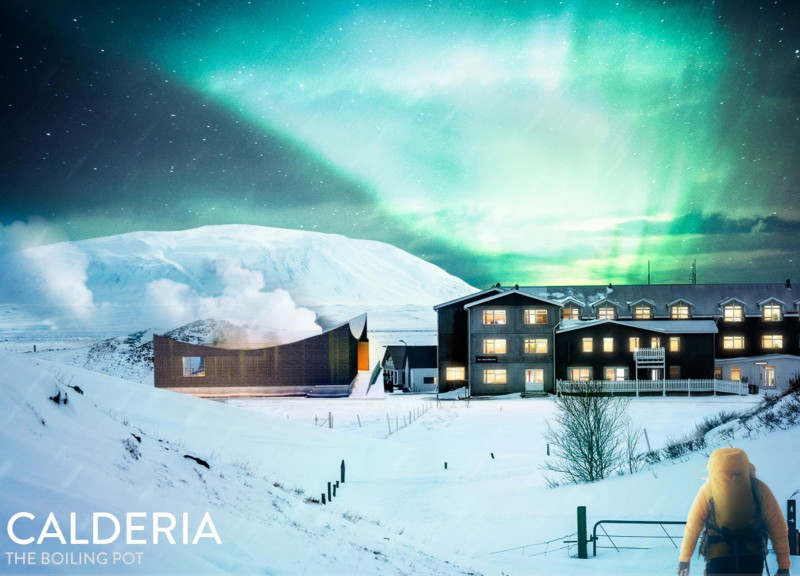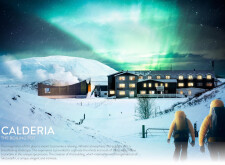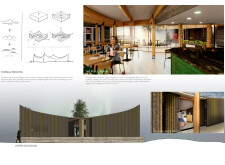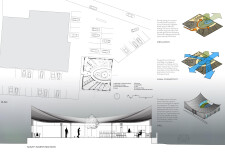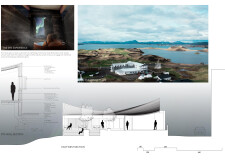5 key facts about this project
### Overview
Caldera: The Boiling Pot is located in a scenic Nordic region characterized by geothermal features. The design aims to create a harmonious relationship with the surrounding landscape, emphasizing relaxation and intimacy. The architecture draws inspiration from the elemental aspects of the sky, mountains, and craters, all influencing its form to establish a connection between visitors and the natural environment.
### Architectural Form and Spatial Organization
The building's design features flowing, organic shapes that reflect the sinuous lines of the terrain. Curvilinear forms are employed to foster tranquility, while the spatial arrangement is meticulously crafted to promote interaction among visitors. The public areas are thoughtfully articulated, enhancing circulation and enabling various visual and experiential connections between indoor and outdoor spaces. Key facilities, including a brewery, treatment rooms, and relaxation lounges, are integrated to create a comprehensive wellness environment.
### Material Selection and Sustainability
Materiality plays a crucial role in reinforcing the building's environmental ethos. Hand-shaped, rammed-earth walls provide warmth and a tactile quality, fostering a connection to the earth. Wood is utilized in structural elements and interior finishes to enhance warmth and invite nature indoors. Additionally, glass is strategically incorporated to maximize natural light and views, while metal and concrete are used in structural cores to ensure durability. This careful selection of materials supports sustainability while maintaining the architectural integrity of the design.
The architecture is designed to evoke a meditative experience by incorporating delicate connections between interior spaces and the surrounding landscape, thus inviting exploration and engagement.


